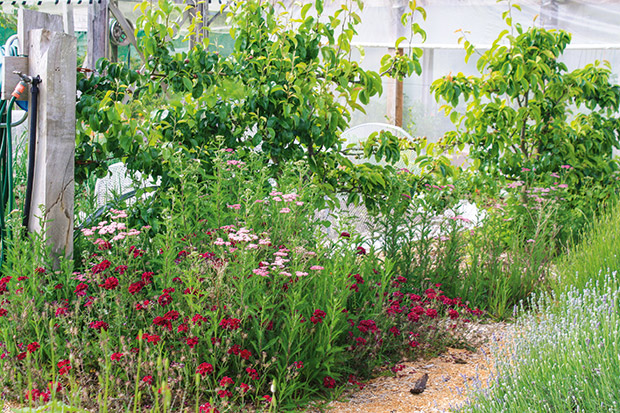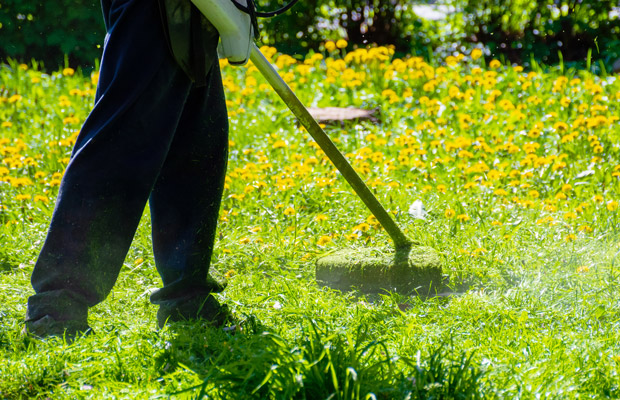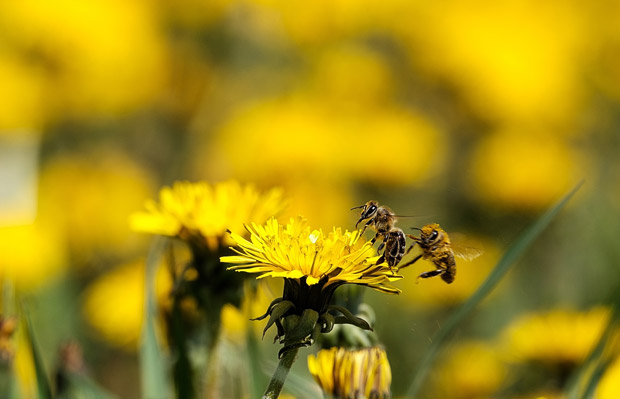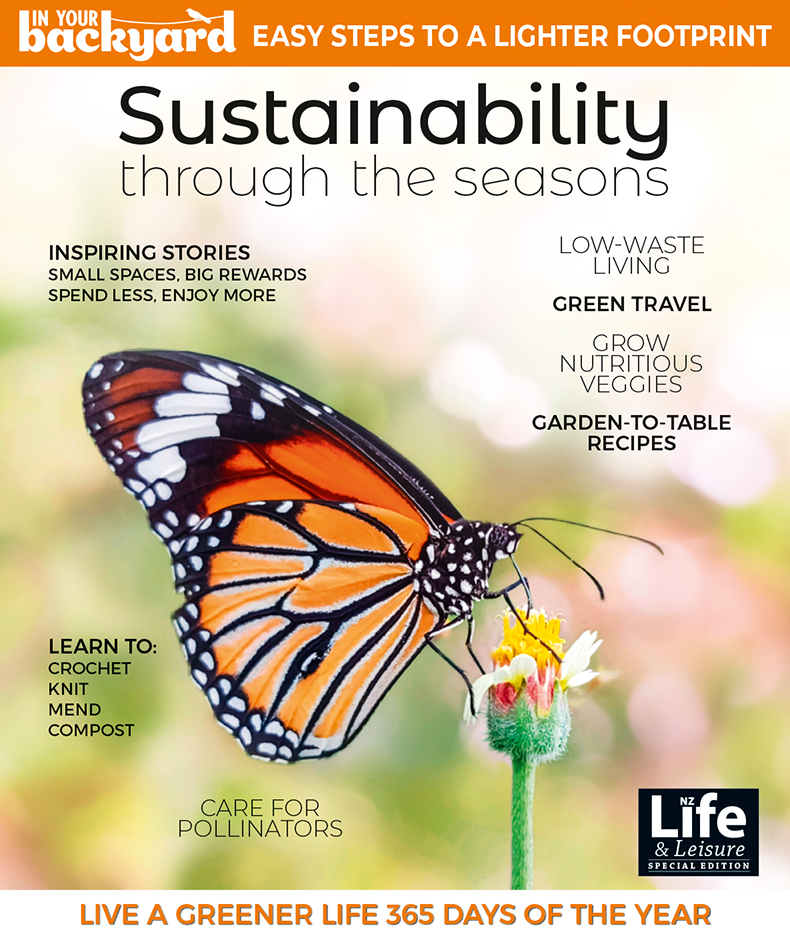Why you should consider letting your lawn go wild

Life’s too short to be fussy over a lawn, it’s time to let nature take its course.
Words: Kath Irvine
Summer is a time to pause and ponder the purpose of a garden lawn. If no compelling reason comes to mind, consider letting it go wild. The insect life that comes is as delightful as the bonus of one less job to do on Saturday.
STRENGTH IN DIVERSITY
A long, mixed-species lawn adds new layers of diversity – nature’s secret superpower. Monoculture lawns are vulnerable to drying out, pests, weeds and dying off when conditions aren’t favourable for that one species.
A mixture allows success for one or two when others fail. Left to flower with dandelion, clover, plantain, rye, chicory or buttercup, a mixed-species lawn feeds a variety of insects, butterflies and bees who stick around to pollinate and manage pests. This mixture above ground plays out below ground, too. The different roots draw different minerals and interact with a variety of soil life forms. This family of below-ground life spreads out to nearby gardens.

Grass that is constantly cut has shallow vulnerable roots that need feeding and watering to stay alive. When left to grow long, the roots dive deep, improving soil structure and bringing resilience.
Soil life explodes too. Beneficial fungi and their companions gather beneath spray-free, wild areas and spread outward from there, developing a nutrient exchange network that boosts production and soil health 100-fold. This diverse community of miniature lifeforms keeps soil in good heart and is the well-spring of everyone’s (crops, animals and humans) good health.
REPLACING GRASS
Pave the way for new species in a lawn by first removing the grass. Grass is so vigorous that it helps if new plants have a head start. Do this by laying a square of plastic on the grass. Weight it down. Clear plastic works best, but use black plastic if that’s what you have. Do little patches at a time. A big, bare patch of dirt is more vulnerable to drying out.
When the sward has died off, remove the plastic and sow new seed thickly. Time this for the end of summer when the mornings and nights are dewy. Do not dig the soil to avoid awakening existing dormant seeds. Sprinkle mulch on top of the seed, water in and protect with bird net until seedlings are established.
WHAT TO PLANT
Because life’s too short to be fussing over a lawn, choose hardy, drought tolerant species. Also consider bee and butterfly fodder, mineral-rich herbs for mulch and a mixture of roots for best soil health. Kings Seeds’ Chicken Greens mixture is an excellent combination of all of the above with the added bonus of edible greens and flowers.

The mix includes nitrogen fixers (clovers), groundcovers (beets, minutina), tap roots (chicory + dandelion) and spreading roots (plantain + cocksfoot grass). Rather than trying to eliminate the grass, go for a meadow style, where taller, hardier species and grass happily co-exist. Shallow, low-growing herbs such as chamomile and thyme are easily outcompeted by grass and only look good for a few seasons.
HOME-GROWN MULCH
Fresh grass clippings are a handy addition to compost, and they can be used as mulch if lightly sprinkled. When grass is left to grow long before harvesting for mulch, its value is greatly increased. The nitrogen ebbs in favour of carbon, creating a far better product. When creating mulch leave a good 10cm stub behind for best health.
Blaze a trail: Cut tracks through the long grass to where needed – the washing line, the chook house, the veggie patch, the driveway. Tracks make getting about easier and keep legs dry when it rains.
A compromise: An alternative to a fully wild lawn is to mow it a bit higher for a more rustic look, and try to leave it as as long as possible between mowings.
When meadow lawn doesn’t work:
1. Hayfever is no fun and if long grass means a sneezy and itchy household, a meadow lawn won’t work.
2. Bee allergies are compelling reasons to cut the lawn before it flowers.
3. Meadow lawns aren’t suitable in high fire-risk areas.
This is an extract from special edition, Sustainability Through the Seasons. This special edition practical guide to living a greener and more environmentally friendly life 365 days of the year. It is packed with self-sufficiency tips on seasonal gardening, low-waste living, garden-to-table cooking, sewing and mending, bread-making and crochet and knitting.


